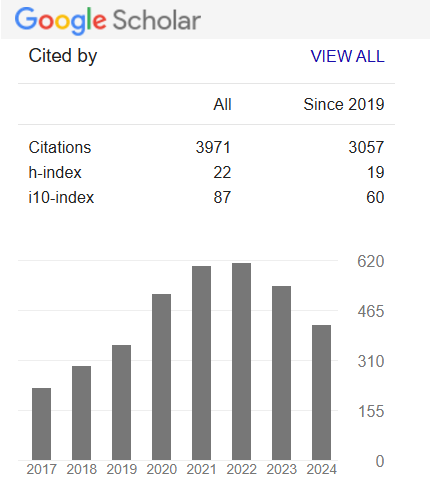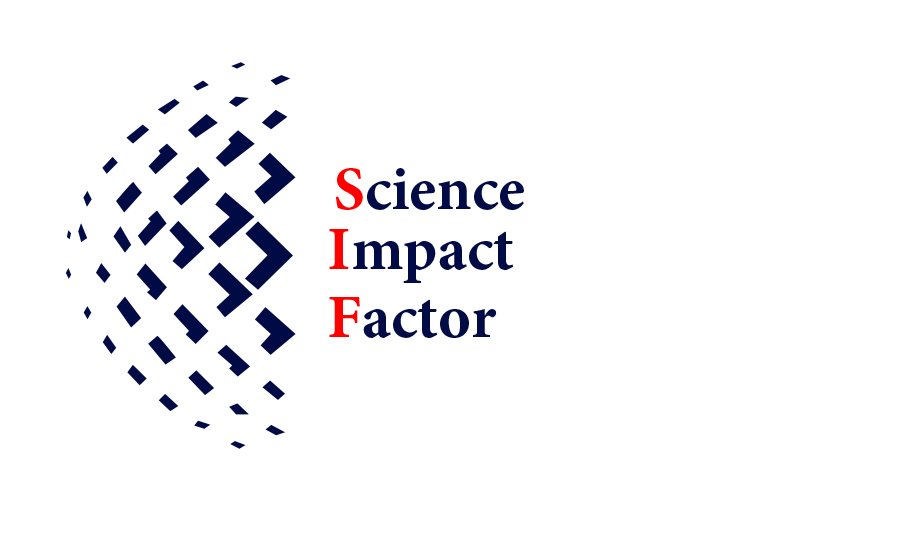Larvicidal activity of aqueous leaf extract of Caladium bicolor against Anopheles sp.
Abstract
As mosquitoes develop increasing levels of resistance to synthetic larvicides, there is a strong need to explore alternative solutions that are more environmentally friendly. In this study, we investigated the larvicidal activity of an aqueous leaf extract of Caladium bicolor against the malaria mosquito, Anopheles, which is considered the primary malaria vector. The leaf extract was prepared using Soxhlet extraction and was tested at doses of 125-500 mg/10ml following the recommended WHO (World Health Organization) protocols. The extract mixture showed substantial larvicidal activity, with an LC50 of 400 mg/10ml after 24 hours. The extract suggests that Caladium bicolor may be viable candidates for environmentally-friendly mosquito control. Anopheles larvae exposed to aqueous extract of Caladium bicolor gave behavioural responses to various toxic reactions such as erratic movements; air gulping with prolonged exposure resulted in dullness, inability to swim. This study concluded potential bioactive agents in Caladium bicolor leaf extract might have toxic and/or metabolic characteristics that are harmful to larvae. The widespread availability of Caladium bicolor as a plant enhances its feasibility as a sustainable larvicide. This study pioneers the use of its leaves, suggesting a novel resource for integrated vector management. Further research into active compounds and field applications is recommended to validate scalability and environmental safety.
Downloads
References
Dua VK, Pandey AC, Raghavendra K, Gupta A, Sharma T & Dash AP (2009) Larvicidal activity of neem oil (Azadirachta indica) formulation against mosquitoes. Malaria Journal, 8, 124. https://doi.org/10.1186/1475-2875-8-124
Elimam AM, Elmalik KH, & Ali FS (2009) Efficacy of leaves extract of Calotropis procera Ait. (Asclepiadaceae) in controlling Anopheles arabiensis and Culex quinquefasciatus mosquitoes. Tropical Biomedicine, 26(2), 130–139. https://pubmed.ncbi.nlm.nih.gov/19901899/
George A, & Rajendran S (2015) Larvicidal activity of Mangifera indica leaf extracts against Aedes aegypti. Journal of Vector Borne Diseases, 52(3), 238–242. https://pubmed.ncbi.nlm.nih.gov/26418665/
Govindarajan M (2010) Larvicidal efficacy of Ficus benghalensis L. plant leaf extracts against Culex quinquefasciatus Say, Aedes aegypti L. and Anopheles stephensi Liston (Diptera: Culicidae). European Review for Medical and Pharmacological Sciences, 14(2), 107–111. https://pubmed.ncbi.nlm.nih.gov/20329571/
Inaba K, Furuta Y, Nihei KI & Kamiya T (2022) Molecular action of larvicidal flavonoids on ecdysteroidogenic glutathione S-transferase Noppera-bo in Aedes aegypti. BMC Biology, 20(1), 1–14. https://doi.org/10.1186/s12915-022-01233-2
Kamaraj C, Bagavan A, Rahuman AA, Zahir AA, Elango G & Pandiyan G (2011) Larvicidal activity of medicinal plant extracts against Anopheles subpictus & Culex tritaeniorhynchus. Indian Journal of Medical Research, 134(1), 101–106. https://www.ncbi.nlm.nih.gov/pmc/articles/PMC3171902/
Kannathasan K, Senthilkumar A & Venkatesan M (2011) Larvicidal activity and GC-MS analysis of flavonoids of Vitex negundo and Andrographis paniculata against Aedes aegypti. Journal of Vector Borne Diseases, 48(3), 177–181. https://pubmed.ncbi.nlm.nih.gov/24220075/
Kumar P, Shakya R, Kumar V, Kumar D, Chauhan RPS & Singh H (2023) Chemical constituents and strong larvicidal activity of Solanum xanthocarpum among selected plant extracts against the malaria, filaria, and dengue vectors. Journal of Vector Borne Diseases, 60(1), 18–31. https://doi.org/10.4103/0972-9062.361177
Miroddi M, Calapai G, Navarra M, Minciullo PL & Gangemi S (2013) Passiflora incarnata L.: Ethnopharmacology, clinical application, safety and evaluation of clinical trials. Journal of Ethnopharmacology, 150(3), 791–804. https://doi.org/10.1016/j.jep.2013.09.047
Mulla MS, & Su T (1999) Activity and biological effects of neem products against arthropods of medical and veterinary importance. Journal of the American Mosquito Control Association, 15(2), 133–152. https://pubmed.ncbi.nlm.nih.gov/10412110/
Ghosh Anupam & Chowdhury, Nandita & Chandra Goutam (2012) Plant extracts as potential mosquito larvicides. The Indian journal of medical research. 135. 581-98.
World Health Organization. (2005). Guidelines for laboratory and field testing of mosquito larvicides. WHO/CDS/WHOPES/GCDPP/2005.
https://www.who.int/publications/i/item/WHO-CDS-WHOPES-GCDPP-2005.13
World Health Organization. (2023). Malaria fact sheet. https://www.who.int/news-room/fact-sheets/detail/malaria
Downloads
Published
How to Cite
Issue
Section
License
Copyright (c) 2025 Authors

This work is licensed under a Creative Commons Attribution-NonCommercial-NoDerivatives 4.0 International License.
Open Access This article is licensed under a Creative Commons Attribution 4.0 International License, which permits use, sharing, adaptation, distribution and reproduction in any medium or format, as long as you give appropriate credit to the original author(s) and the source, provide a link to the Creative Commons license, and indicate if changes were made. The images or other third party material in this article are included in the article’s Creative Commons license unless indicated otherwise in a credit line to the material. If the material is not included in the article’s Creative Commons license and your intended use is not permitted by statutory regulation or exceeds the permitted use, you will need to obtain permission directly from the copyright holder. To view a copy of this license, visit http://creativecommons.org/ licenses/by/4.0/










